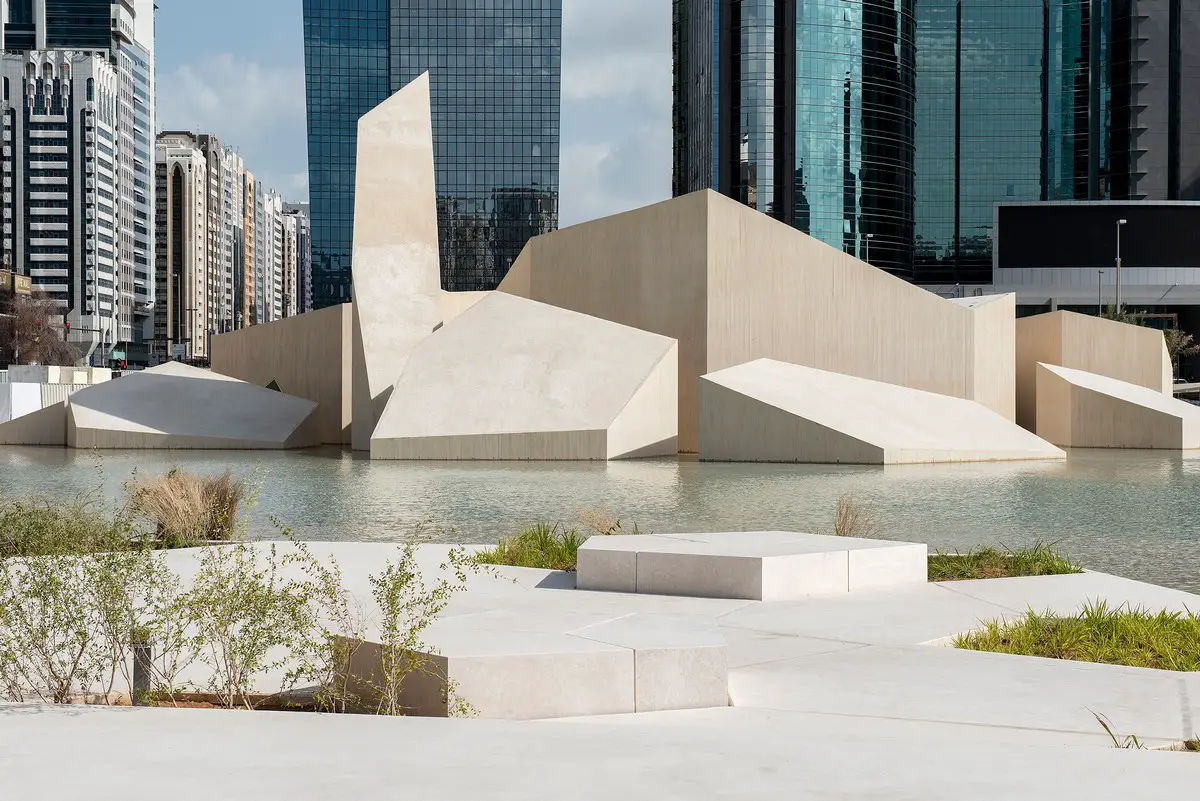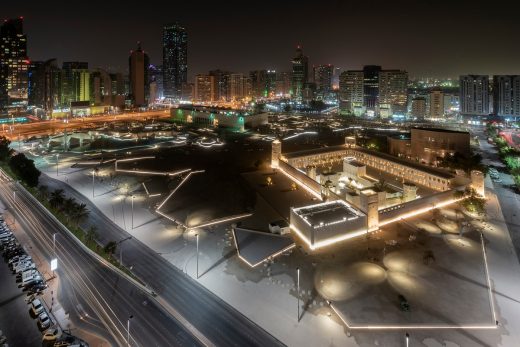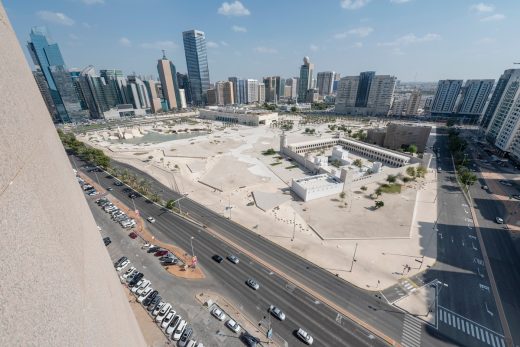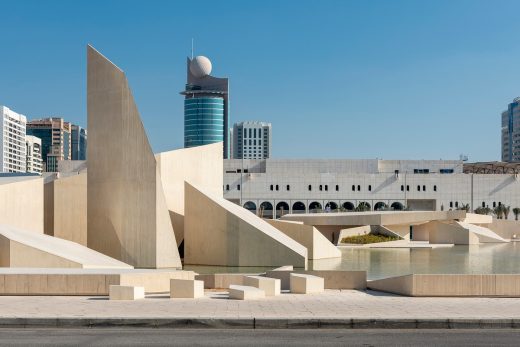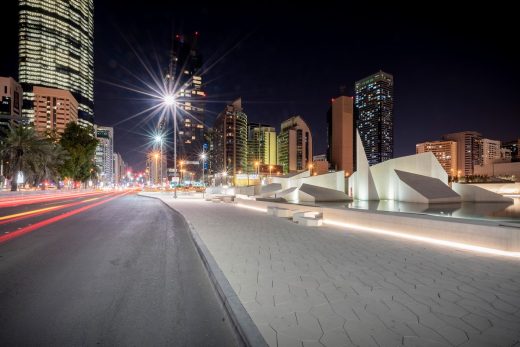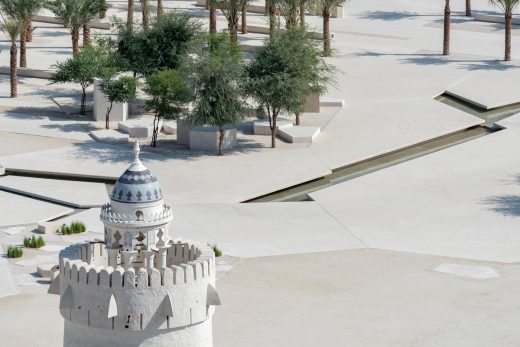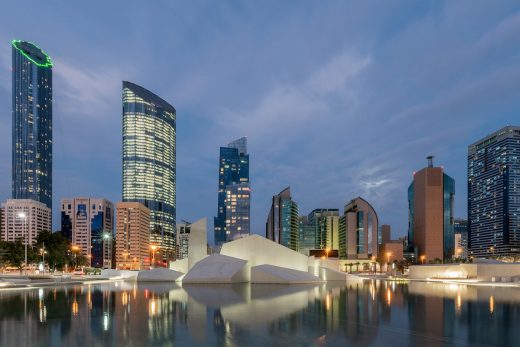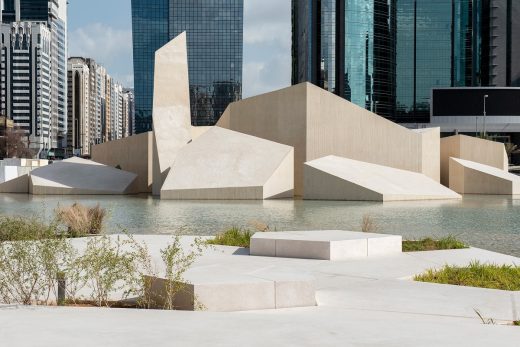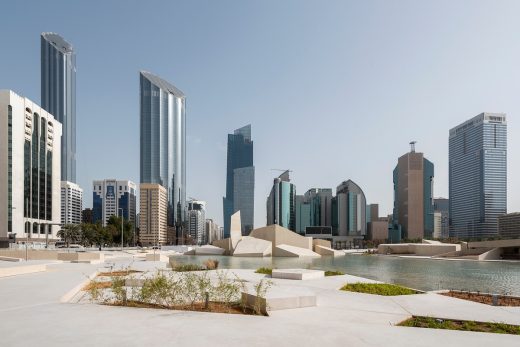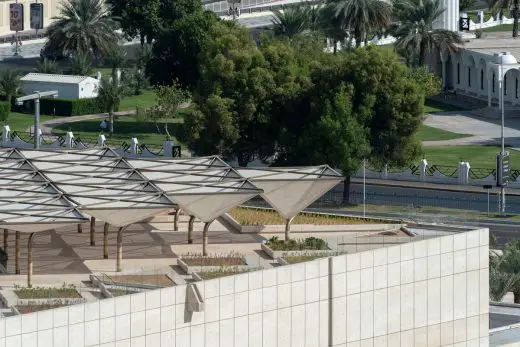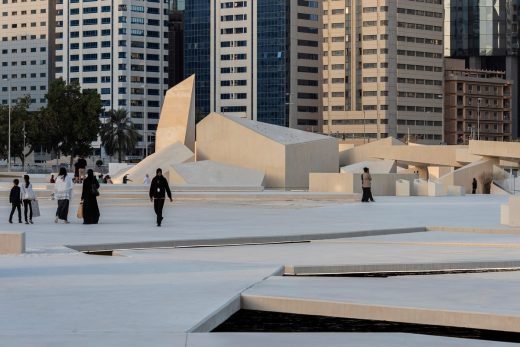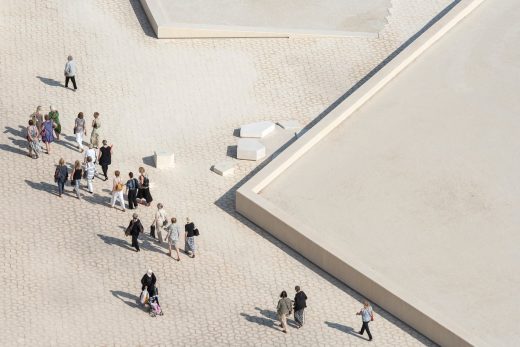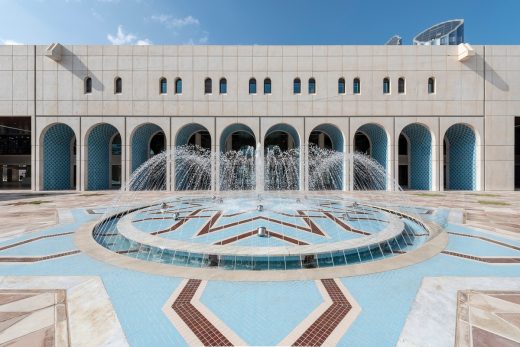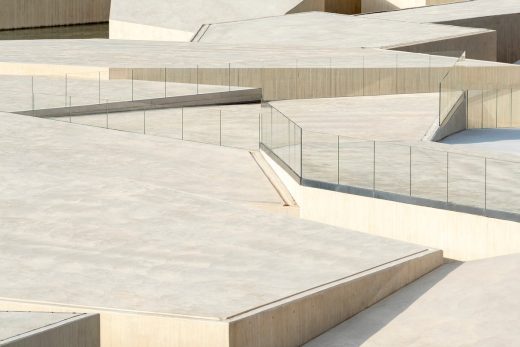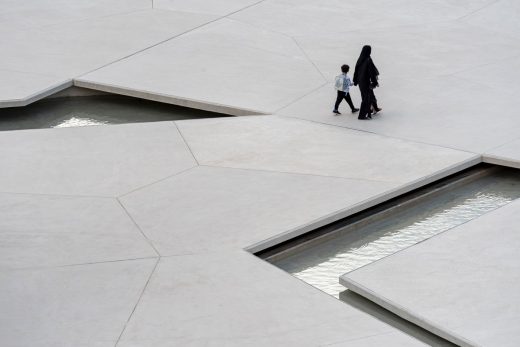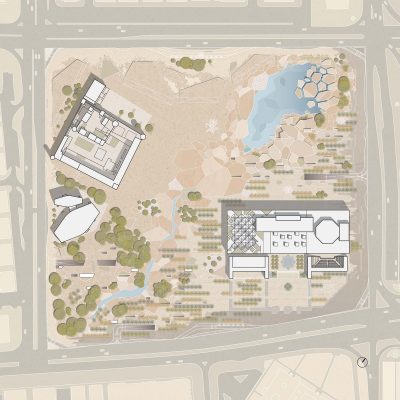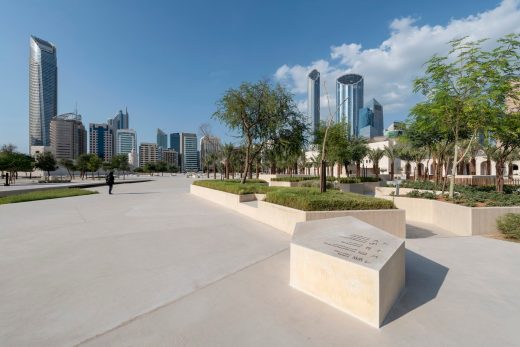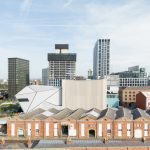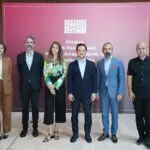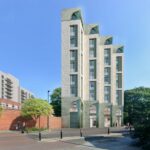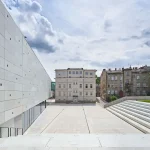Al Hosn Masterplan And Landscape Abu Dhabi Buildings, Architect, CEBRA UAE Architecture Photos
Al Hosn Masterplan and Landscape Abu Dhabi, UAE
8 June 2022
Al Hosn Masterplan Award News
Al Hosn Masterplan, Abu Dhabi UAE
Entries from more than 80 countries were in the run for this year’s prestigious Architizer A+ Awards 2022 and yesterday the winners were revealed with the Al Hosn masterplan project in Abu Dhabi – designed by Danish CEBRA – as the Popular Choice Winner in the ‘Urban and Masterplan’ category.
3 January 2022
Design: CEBRA, Denmark
Location: Qasr al Hosn Fort, Abu Dhabi, UAE
A magical portal to a future inspired by the past
Photos by Mikkel Frost
Al Hosn Masterplan And Landscape in Abu Dhabi
The Al Hosn masterplan project in Abu Dhabi, designed and developed by Danish CEBRA, has received several international architecture awards over the last few years – most recently the project has been awarded both WAN Award 2021 and WAF Award 2021 for its overall masterplan design and landscape architecture.
In 2016 the Danish architecture and design practice CEBRA was commissioned by the Department of Culture and Tourism Abu Dhabi to reinstate the Qasr al Hosn Fort as Abu Dhabi’s cultural heart. The Qasr Al Hosn is the city’s oldest and most important building. Originally built in 1760 as a watchtower to protect the only freshwater well on Abu Dhabi Island and later extended into a palace, it literally constitutes the birthplace of the modern metropolis.
The aim of the transformation masterplan has been to reinstate the fort as the cultural heart of the city with a new 140.000 sqm cultural park-scape and to conserve both the site surrounding the fort and the city’s Cultural Foundation – a 1980’s listed cultural centre of Bauhaus origins – which also sits on the site. Introducing a new type of locally rooted urban landscape the project combines modernity alongside the Emirate’s maritime and desert heritage in a coherent narrative that communicates between the site’s two contrasting buildings.
Today the site is transformed into a vivid public park, which enhances the two historic buildings as important landmarks in the city. Simultaneously, the project adds several new functions to the Al Hosn site making it an asset to the entire city of Abu Dhabi – restaurants, facilities for cultural activities, a breath-taking prayer hall, and an impressive open landscape with water features and shady pocket spaces for relaxation in the Middle Eastern sun.
REINTRODUCING THE COASTAL DESERT LANDSCAPE
The project emphasizes its own duality by dividing the site diagonally into two contrasting landscapes. A plain and open desert-like landscape around the Qasr Al Hosn Fort reinstates the building as a free-standing landmark on sand like it was before the modern city rapidly sprung up. Opposite, a paved and programmed area with intensified planting surrounds the Cultural Foundation Building, thus combining the desert landscape with the modern city grid structure.
The two landscapes are connected by a public urban space emerging from formations of ”cracks” and irregular geometric shapes. The central landscape area is defined through an organic pattern known as a ‘Voronoi’. The design articulates an architectural interpretation of Abu Dhabi Island’s coastal landscape of sandbars, mangroves, and the salt flats’ distinctive cracked patterns, drawing connections between the centre of today’s metropolis and the natural setting from which it emerged.
BOTH LANDSCAPE AND BUILDINGS
The geometries of the urban landscape intentionally land somewhere between building and landscape, with the tone of the concrete matching the colour of the natural sand. Along the transitional zone, the landscape changes from horizontal planes to slanting surfaces that gradually grow into actual buildings for food and beverage facilities, ancillary functions, and culminating with a Musallah prayer hall at the north-eastern corner of the site.
All components – from sitting bollards, surface patterns, lighting concept, and building volumes to the interior’s floor plans, doorways, and furnishings – are subtly integrated into the overall urban landscape topography and merge with the park to be experienced as natural landscape elements. Thus, the landscape emphasises the Fort and the Cultural Foundation as the main visual anchors.
Water constitutes a natural focal point in the design of the Al Hosn landscape – both for its cultural significance, as an integrated element in the overall design narrative, as a natural cooling element for the project’s microclimate, and to present solutions for minimizing water consumption within the public park – i.e., by using native desert plants with low water consumption and to use grey wastewater from the local area when watering the park. The park-scape’s central zone integrates a series of water features that run from south to north, breaking out of the distinctive pavement’s irregular geometries as narrow creeks, canals, streams, and underground passages that transform into large water feature around the Musallah prayer hall.
Instead of landscaping a traditional urban park of lush vegetation that would require comprehensive irrigation and maintenance in a desert climate, the project aims at creating a locally anchored park aesthetic characterized by the use of local materials and indigenous, hardy, sun tolerant plants that require minimal irrigation.
A DYNAMO FOR PUBLIC LIFE
The Al Hosn site introduces a meaningful flow through the city by interweaving paths across the site with the adjacent functions and the wider urban fabric, thereby promoting pedestrianism and acting as a dynamo for public life. This is supported by the park’s vegetation, which provides shade along the pathways and pocket spaces. Also, large overhangs created by the landscape’s slanting surfaces form the food and beverage buildings along with the water feature, which supports a comfortable climate for outdoor activities independent from artificial air-conditioning.
The project is developed in close collaboration with The Department of Culture and Tourism – Abu Dhabi (DCT Abu Dhabi)
Al Hosn Masterplan And Landscape Abu Dhabi – Building Information
Location: Abu Dhabi, UAE
Client: Department of Culture and Tourism – Abu Dhabi (DCT Abu Dhabi)
Size: 140.000 sqm
Status: Completed
Architect: CEBRA
Landscape architect: CEBRA
Plant Specialist: SLA
Engineer: GHD
Conservation specialist: Elgaard Architecture
Signage and wayfinding: Kossmann.Dejong
Qasr Al Hosn fort photographer: Mikkel Frost
CEBRA
CEBRA is a Danish architectural office founded in 2001 by the architects Mikkel Frost, Carsten Primdahl and Kolja Nielsen. In April 2017, architect MAA Mikkel Hallundbæk Schlesinger entered the group of partners.
Based in Aarhus in Denmark, Copenhagen and in Abu Dhabi in the UAE, CEBRA employs a multidisciplinary international staff of 65, who all share a strong passion for architecture. CEBRA creates architecture to move people. By combining a deep understanding of the project context and the client’s needs with a strong artistic ambition, we design meaningful spaces that inspire people, stimulate the senses, connect to nature, and encourage positive change.
Our approach is open-minded and based on dialogue. Empathy is at the core of how we create architecture, and we listen to the world around us to gain a deep understanding of local cultures, conditions, climate, and building traditions. At the same time, we focus on creating architecture for the senses. In interdisciplinary teams we practise artistic leadership and speak up for emotional impact to create architecture that is both bold, beautiful, and useful.
Al Hosn Masterplan And Landscape Abu Dhabi images / information received 030222 from CEBRA architecture
Location: https://en.wikipedia.org/wiki/Abu_Dhabi, United Arab Emirates, Persian Gulf, the Middle East, southwestern Asia
Architecture in Abu Dhabi
Contemporary Architecture in Abu Dhabi, UAE
Al Wathba Birdwalk in Abu Dhabi
Architects: AIDIASTUDIO
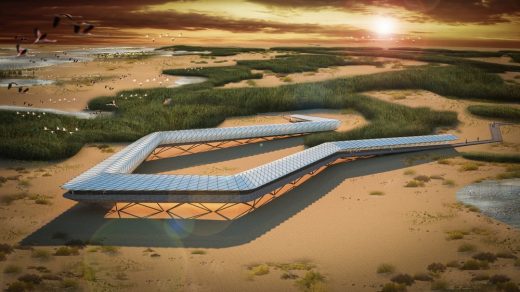
image courtesy of architects
Al Wathba Birdwalk in Abu Dhabi
Abrahamic Family House Abu Dhabi, Saadiyat Island
Design: Sir David Adjaye Architect
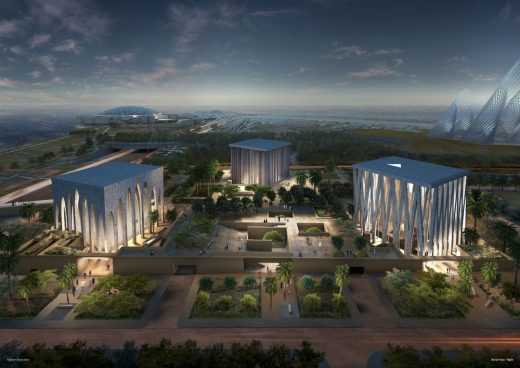
image courtesy of architects
Abrahamic Family House in Abu Dhabi
New Miral Headquarters
Design: Godwin Austen Johnson Architects (GAJ)
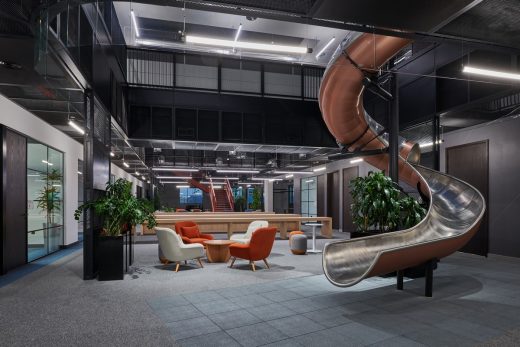
photo courtesy of architects office
New Miral Abu Dhabi Headquarters
Abu Dhabi Architecture Walking Tours
Comments / photos for the Al Hosn Masterplan And Landscape Abu Dhabi page welcome

